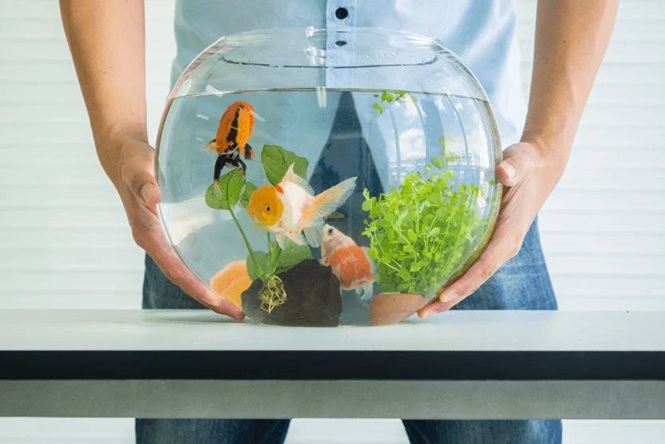A well-maintained aquarium creates a thriving environment for fish while enhancing the beauty of any space with its vibrant aquatic ecosystem display. Combining the right diet with proper api fish care methods helps maintain a clean and healthy aquarium, ensuring your fish live long, happy lives. Proper aquarium care requires consistent maintenance, high-quality water treatments, and effective filtration methods to keep fish healthy and stress-free.
Many fish enthusiasts struggle to maintain water clarity, balance pH levels, and prevent harmful bacteria, leading to unnecessary stress for their aquatic pets. A balanced diet is also essential for fish health, promoting strong immune systems and vibrant colors. Providing high-quality nutrition like hikari food fish ensures that fish receive the necessary vitamins and nutrients for overall well-being.
The Importance of API Fish Care
Caring for an aquarium requires more than just feeding fish and changing water occasionally. Regular maintenance is crucial for:
- Preventing algae growth and maintaining water clarity
- Balancing pH levels to reduce fish stress and disease risk
- Removing harmful toxins like ammonia, nitrates, and chlorine
- Supporting beneficial bacteria growth for a stable ecosystem
- Ensuring fish have a clean and oxygen-rich environment
Neglecting proper care can lead to water contamination, fish diseases, and overall aquarium instability. Using the right methods and products ensures optimal tank conditions for your aquatic pets.
Key Steps to Maintain a Clean and Healthy Aquarium
1. Maintaining Water Quality
Water quality is the foundation of a healthy aquarium. To achieve optimal conditions:
- Perform regular water changes – Replace 20-30% of the water every two weeks
- Test water parameters – Monitor pH levels, ammonia, nitrites, and nitrates regularly
- Use dechlorinators and water conditioners – Remove harmful chemicals and stabilize water
2. Effective Filtration System
A good filtration system removes debris, chemicals, and excess food. Types of filters include:
- Mechanical Filters – Capture debris and waste particles
- Biological Filters – Promote beneficial bacteria for a stable ecosystem
- Chemical Filters – Absorb toxins and remove odors
Regularly cleaning or replacing filter media helps maintain efficient filtration performance.
3. Controlling Algae Growth
Excessive algae can make aquariums look dirty and cause oxygen imbalances. To prevent algae buildup:
- Limit light exposure – Keep aquarium lights on for 8-10 hours daily
- Introduce algae-eating fish or snails – Natural algae control method
- Use algae-control treatments – Safe solutions to reduce excess algae growth
4. Feeding Your Fish the Right Diet
A balanced diet improves fish health, coloration, and longevity. High-quality food like hikari food fish provides:
- Essential proteins and nutrients for growth
- Improved digestion, reducing waste buildup in tanks
- Enhanced coloration for vibrant, healthy fish
Overfeeding should be avoided as excess food can decay and pollute the water.
5. Tank Cleaning and Gravel Maintenance
Waste accumulation in gravel can lead to toxic gas buildup. To keep the substrate clean:
- Use a gravel vacuum – Remove uneaten food and fish waste
- Stir the substrate occasionally – Prevent harmful bacteria from forming
- Avoid overfeeding – Reduce food waste and tank pollution
6. Ensuring Proper Oxygen Levels
Sufficient oxygen is essential for fish survival. Ways to improve oxygenation include:
- Adding an air pump or bubbler – Increases oxygen exchange
- Using plants – Live plants naturally oxygenate the water
- Maintaining proper water movement – Ensures even oxygen distribution
Pro Tips for Successful API Fish Care
Choose the Right Tank Size
- A larger tank provides more stability in water parameters and reduces stress for fish.
- Overcrowding leads to poor water quality, so always research the space requirements of your fish.
Monitor Water Temperature
- Use an aquarium heater and thermometer to maintain a stable temperature.
- Sudden fluctuations in temperature can weaken the immune system of fish.
Acclimate New Fish Properly
- When introducing new fish, let them adjust to the water temperature by floating the bag in the tank for 15-20 minutes.
- Slowly add tank water into the bag before fully releasing the fish.
Quarantine New Fish
- Always quarantine new fish for at least two weeks in a separate tank to prevent the spread of diseases.
- This step helps identify any potential health issues before adding them to the main aquarium.
Check Your Aquarium for Leaks
- Regularly inspect your tank for small leaks, especially near the seams.
- Early detection prevents major water damage and tank failure.
Case Studies
1. Improving Water Clarity
John, a beginner aquarist, struggled with cloudy water. After using a high-quality filter, performing regular water changes, and using safe treatments, he achieved crystal-clear water in just two weeks.
2. Preventing Fish Illness
Lisa’s goldfish experienced frequent illnesses due to poor water quality. By following api fish care guidelines, including consistent water testing and filtration, she reduced fish disease significantly.
3. Enhancing Fish Colors
Mark noticed his betta fish appeared dull in color. Switching to hikari food fish improved the fish’s vibrancy within a month, proving the importance of a nutrient-rich diet.
Conclusion
Maintaining a clean and healthy aquarium requires commitment, but the rewards of a thriving aquatic environment make it worthwhile. By following api fish care techniques, including proper filtration, regular maintenance, and quality nutrition, fish owners can create an optimal habitat for their pets. Choosing the right food, such as hikari food fish, and monitoring water quality ensures a stress-free environment for fish. Keeping an aquarium in top condition doesn’t have to be complicated—small consistent efforts lead to a beautiful and healthy underwater world. Have aquarium care tips or experiences? Share them in the comments below!
Frequently Asked Questions (FAQs)
1. How often should I clean my fish tank?
It is recommended to perform partial water changes every two weeks and a deep clean (including filter maintenance) once a month.
2. What is the best way to prevent algae growth?
Reducing light exposure, adding algae-eating fish, and using algae control treatments help prevent excessive algae buildup in an aquarium.
3. Can I use tap water for my aquarium?
Yes, but tap water should be treated with a dechlorinator to remove harmful chemicals like chlorine and chloramine before adding it to the tank.
4. What is the ideal diet for my fish?
A balanced diet includes high-quality fish food such as hikari food fish, which provides essential nutrients to promote health, color, and longevity.
5. Why is my aquarium water cloudy?
Cloudy water can be caused by excess waste, overfeeding, or an imbalanced nitrogen cycle. Regular water changes and filtration help maintain clarity.


